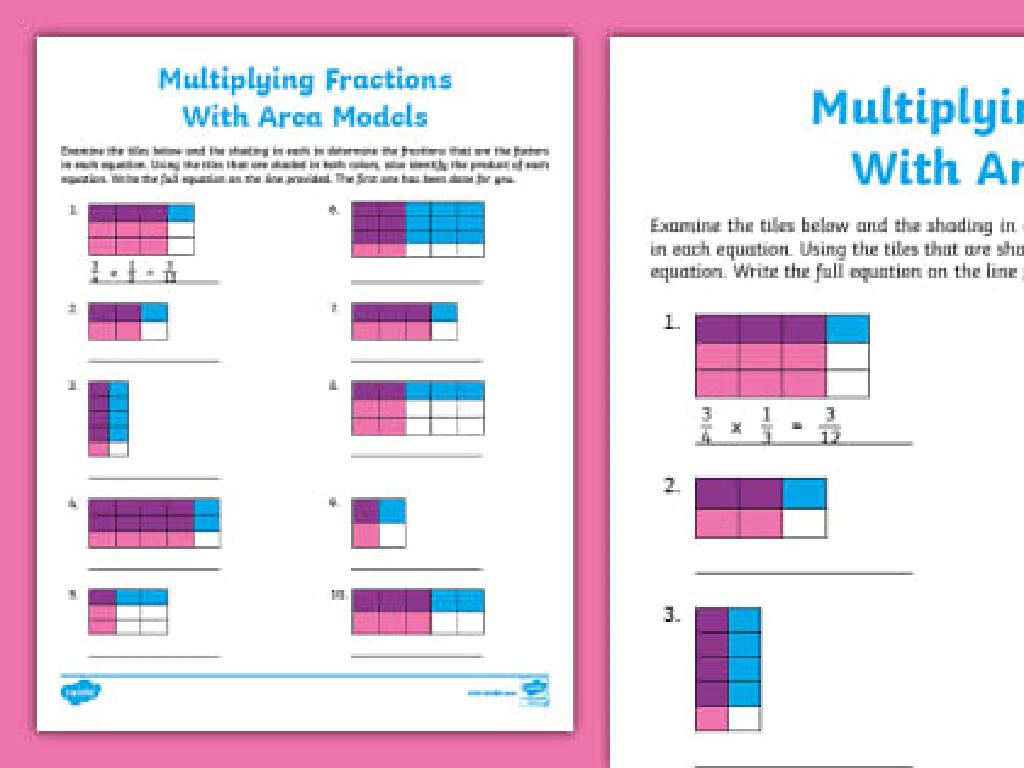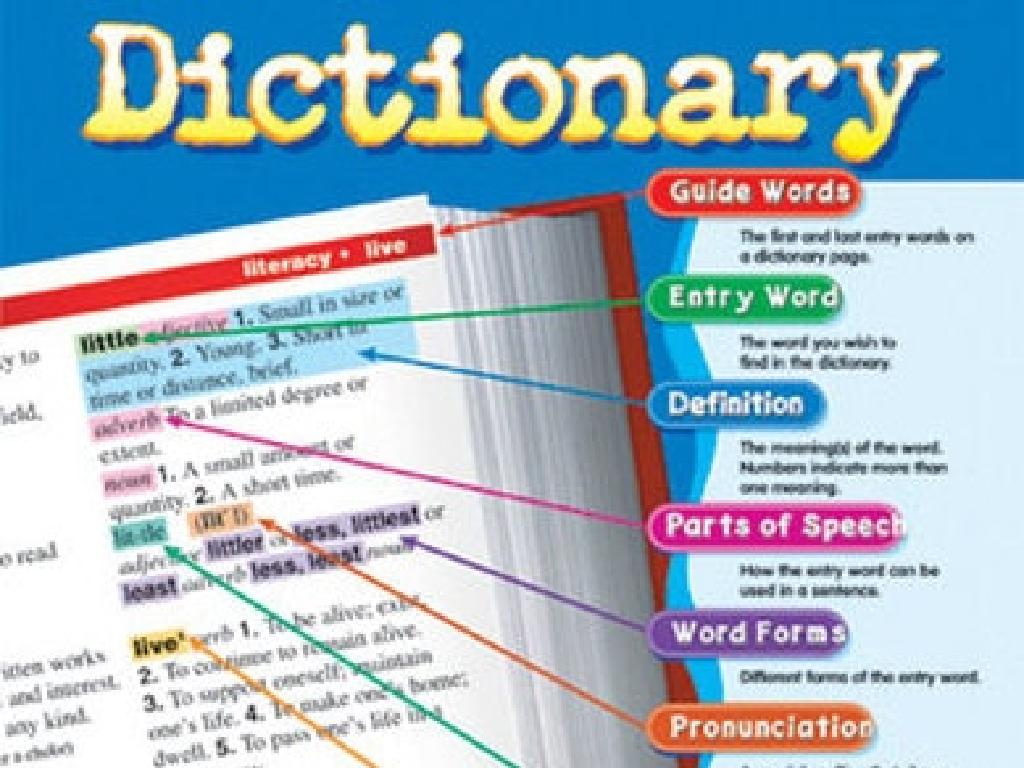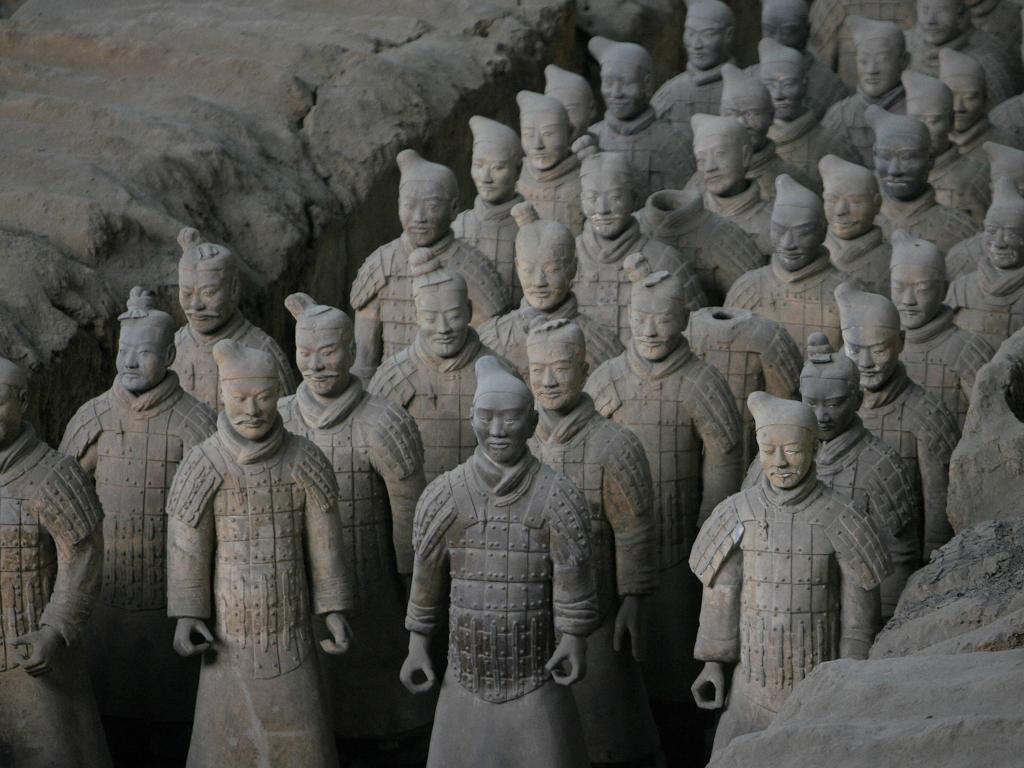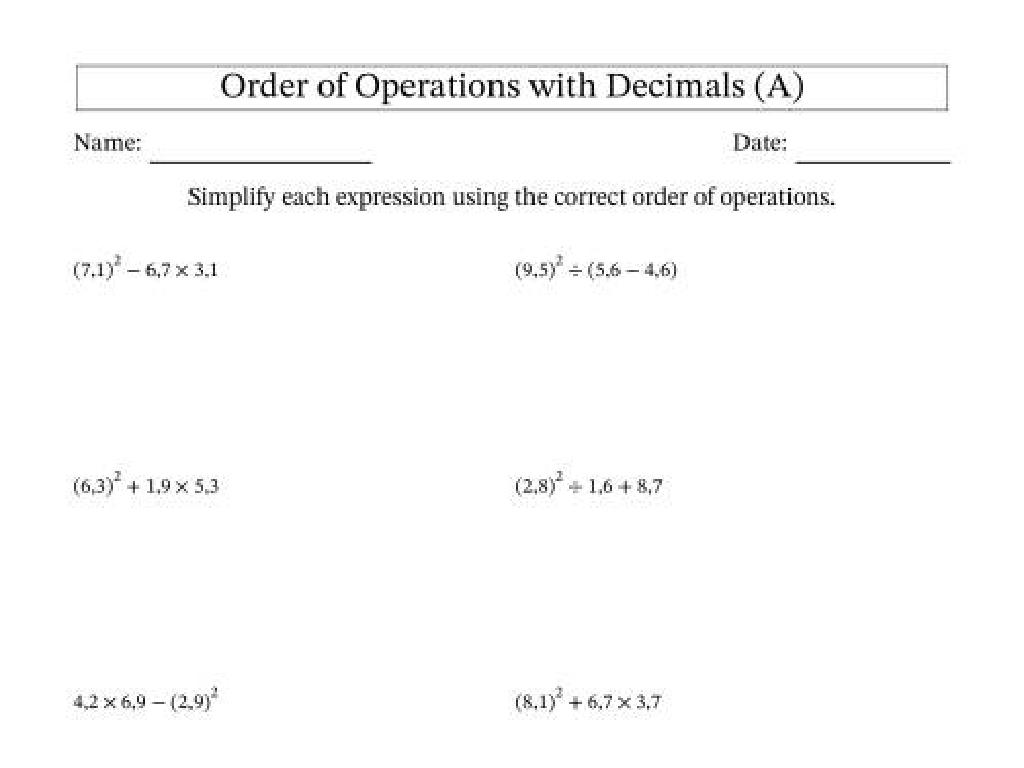Put Numbers Up To 5 In Order
Subject: Math
Grade: Kindergarten
Topic: Counting To 5
Please LOG IN to download the presentation. Access is available to registered users only.
View More Content
Welcome to Counting: Numbers 1 to 5
– Greet our little mathematicians
– Learn numbers 1, 2, 3, 4, 5
– Counting with fingers can be fun!
– Arrange numbers from smallest to biggest
– Which number comes first? Let’s find out!
– Practice ordering with fun activities
– We’ll use blocks and pictures to learn
|
This slide introduces kindergarteners to the concept of ordering numbers. Start by greeting the students warmly to create an inviting learning environment. Then, proceed to introduce the numbers 1 through 5, using visual aids like fingers, flashcards, or number blocks. Engage the students by asking them to arrange the numbers in ascending order, reinforcing the concept of ‘smallest to biggest.’ Incorporate hands-on activities such as arranging number blocks or drawing numbers in the correct order to solidify their understanding. The goal is to make the learning process interactive and enjoyable, fostering a positive attitude towards math.
What Are Numbers?
– Numbers help us count
– Each number shows quantity
– Counting objects 1 to 5
– Let’s count: 1 apple, 2 cookies, 3 cars, 4 blocks, 5 ducks
– Practice counting together
– We’ll count items in class
|
This slide introduces the concept of numbers to Kindergarten students. Begin by explaining that numbers are a way to tell us how many things we have, like one nose or two hands. Emphasize that each number represents a specific quantity. Use real-life objects to demonstrate counting from 1 to 5, ensuring to count slowly and clearly. Engage the students by asking them to count along with you. For the activity, have a variety of objects available for the students to count. Encourage them to touch each object as they count to reinforce the concept of quantity. This tactile experience helps solidify their understanding of numbers and counting.
Learning Number 1
– Number 1 represents a single item
– It means one of anything, like one toy
– Example: ‘I have 1 apple’
– Helps us count things one by one
– Showing 1 with our fingers
– Can you hold up 1 finger to show ‘one’?
|
This slide introduces the concept of the number 1 to Kindergarten students. It’s important to start with tangible examples, like one apple, to help them understand the idea of ‘one’ as a quantity. Encourage the students to show one finger, which helps them connect the concept with a physical action. This kinesthetic approach aids in reinforcing the learning. You can also bring a single object to class, like an apple, and use it to show what ‘one’ looks like. Ask the children if they can find one of something in the classroom or at home to share in the next class.
Learning Number 2
– Number 2 means two items
– Like two cookies or two toys
– Example: ‘I see 2 ducks’
– Visualize two of any object
– Let’s count with two claps
– Clap your hands twice, like this: clap, clap
|
This slide introduces the concept of the number 2 to Kindergarten students. Start by explaining that the number 2 represents a pair of items. Use visual aids like pictures of two ducks to help students associate the number with the quantity. Encourage the children to think of other things that come in twos. Then, engage the class in a fun activity by counting out two claps together. This kinesthetic approach helps solidify their understanding of the number 2 through physical activity. Make sure to praise their efforts and correct gently if they clap more or less than two times. The goal is to make them comfortable with counting to two and recognizing the number in various contexts.
Learning Numbers 3, 4, and 5
– Number 3: Three items
– Example: Three balls
– Number 4: Four items
– Example: Four books
– Number 5: Five items
– Example: Five stars
– Counting together
|
This slide is aimed at helping Kindergarten students recognize and understand numbers 3, 4, and 5 by associating them with physical objects. Show images or actual items like balls, books, and stars to visually demonstrate the count. Encourage the students to count out loud together to reinforce their understanding of the sequence of numbers. Make the activity interactive by asking them to bring or point out sets of 3, 4, and 5 items from the classroom. This will help solidify their comprehension of these numbers in a fun and engaging way.
Putting Numbers in Order
– Numbers have a special order
– Like lining up for a game, numbers line up from smallest to biggest
– Starting with 1, then 2, and so on
– 1 is the first, then 2 follows, next is 3, then 4, and 5 is last
– Line up numbers from 1 to 5
– Imagine numbers as friends holding hands in a line
– Practice makes perfect
|
This slide introduces the concept of numerical order to Kindergarten students. Begin by explaining that numbers are like friends in a line, they always stand in the same order. Use visual aids like number cards or objects to physically line up the numbers as you count. Encourage the students to practice putting the numbers in order themselves, which will help reinforce the concept. You can also incorporate a song or a chant about the numbers in order to make the learning process more engaging. Remember to praise their efforts to build confidence.
Practice Time: Ordering Numbers 1 to 5
– It’s your turn to order numbers
– Play a game with number cards
– Use cards with numbers 1, 2, 3, 4, 5
– Arrange cards from 1 to 5
– Put the cards in sequence
– Get ready for fun learning!
|
This slide introduces a hands-on activity for Kindergarten students to practice ordering numbers. The game involves physical number cards that the students will use to arrange numbers from 1 to 5 in the correct order. This activity helps reinforce their understanding of numerical order and sequence. For the teacher: Prepare number cards beforehand and ensure each student or group has a complete set. Demonstrate the activity first by arranging the cards in order yourself. Then, let the students try. Consider variations of the game, such as timing the activity for a fun challenge, or asking students to close their eyes and then identify the missing number when one card is secretly removed. Encourage the students to help each other and praise their efforts to foster a positive learning environment.
Class Activity: Number Train
– Get a number card, 1 to 5
– Line up to form a number train
– Work together as a team
– Help each other find the right spot
– Let’s see the train in order!
– Check if the train goes 1, 2, 3, 4, 5
|
This activity is designed to help Kindergarten students understand numerical order in a fun and interactive way. Distribute number cards randomly to the students. Guide them to collaborate and arrange themselves in a line from 1 to 5, creating a ‘number train.’ Encourage them to communicate and assist each other to find the correct position. Once the train is in order, you can have the students ‘chug along’ the classroom to reinforce the concept. Possible variations of the activity could include: creating multiple trains, timing the activity for speed, or asking students to rearrange in reverse order. This will help students to physically engage with the concept of sequencing numbers.
Great Job on Counting to 5!
– Celebrate your counting success
– Numbers have a special order
– Like 1, 2, 3, 4, 5 helps us count things in order
– Applaud for your friends and yourself
– Clap your hands for everyone’s hard work
– Practice makes perfect
|
This slide is a positive reinforcement for the students after they have successfully completed a counting exercise. It’s important to celebrate their achievements to build their confidence in learning new concepts. Remind them that numbers are used for counting and they always follow a specific sequence. Encourage the children to give themselves and their classmates a big round of applause to acknowledge their effort. This will create a supportive classroom environment. As a follow-up, suggest that they continue practicing counting at home with their family or with objects they enjoy, like toys or snacks, to reinforce the concept.






